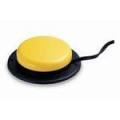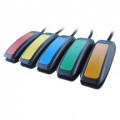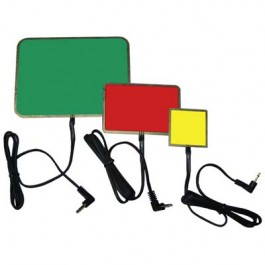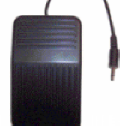Mealtime Partners, Inc. Adaptive Switches
All of the Adaptive Switches listed below can be used to operate the Mealtime Partner Dining Device.
Mealtime Partners, Inc. stocks a small assortment of adaptive switches that have been found to provide excellent access to the Mealtime Partner Assistive Dining Devie. However, if you are aware of an Adaptive Switch that better suits your needs, please contact us to check if it is available through Mealtime Partners. We can provide almost any Adaptive Switch with your Mealtime Partner Dining System. Refer to selecting an Adaptive Switch, below, for more information.
| MtP PART NO. | PRODUCT DESCRIPTION | |
| 6560 | Jelly Bean Adaptive Switches (2.5-inch Diameter) |
 |
| 6562 | Specs Switch (1 3/8 Inch Diameter) |
 |
| 6563 | Mini Cup Switch |
 |
| 6564 | Micro Light Adaptive Switch |
 |
| 6567 | Ultra Light Adaptive Switch |
 |
| 6568, 6569, 6570 | Pal Pad Adaptive Switches |
 |
| 6571 | Foot Adaptive Switch |
 |
Selecting an Adaptive Switch. There are some things that should be considered when selecting adaptive switches to use with dining equipment. First, the user should not expend any more energy than is absolutely essential to operate a switch because extra exertion burns calories and the goal of dining is to consume calories.
Next, the location of the Adaptive Switch should not cause the user to move their limbs excessively because when gross arm or leg movements are produced, the position of the person’s trunk and head is moved. This requires the user to reposition them self for each spoonful of food that they take. This is not a desirable situation.
For those who must use their head to operate switches, the location of the switches is extremely important. Frequently, when head operated adaptive switches are used for wheelchair operation, the switches are mounted to the back or rear, left or right of the head rest. This is very logical positioning because you want the user to look ahead in the direction they are driving. However, this head position for switch operation tends to induce the user to lift their chin to activate the switch. This is not a good practice when operating a dining device because a chin tuck should be maintained for safe eating. Instead, position the head to operate switches so that they can be activated by the temple, slightly above the eyebrow, with their chin in a natural resting position. Make sure that the switches are close enough to the temple for a small head movement to activate them. A large head movement will move the user’s mouth so that they must reposition themselves to take a bite of food.
This page last updated 12-13-2018